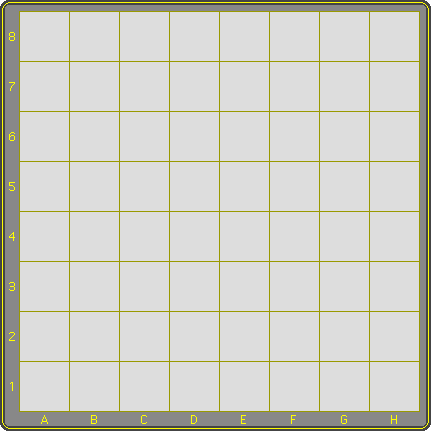Play Inertia interactively.
 | Rules There are two players, Black and Red. Each has a sufficient number of stones and both move only with their own color. A 'group' is a single stone or a number of straight or diagonally connected like colored stones. The placement phase Red starts by placing one stone on the empty board. From that point on players take turns to:
|
Both placements are compulsory. When the player to move can no longer make the second placement, then his turn ends and his opponent may start the movement phase. The number of red and black stones will always be equal, although the 'density' of the position may vary and either player may end up being the one to start the next phase.
The movement phase
Now players take turns to compulsory move one of their stones.
- If a player's move results in an increase of the number of groups, counted as the sum of both colors, then the move is illegal.
- A stone moves as a chess queen over any number of subsequent vacant cells to end on a vacant cell or on the first cell occupied by an opponent's stone which it then captures by replacement.
Object
If a player on his turn unites all his stones in one group, regardless of its size, then he has won. If a player's move results in both sides having one group, then the game ends in a draw. If a move results in only the opponent having one group, then it loses.
Draws
Apart from simultaneous unification, 3-fold is a draw. Note that cooperative cycles are inherently possible. Forced cycles have not been found but may be possible.
Hexinertia
The Inertia applet also features three connectivity-6 hexversions (meaning that pieces move like 'hexrooks'), base-5, -6 and -7.
|
How I invented ... Inertia External links Inertia © MindSports | ||||||



